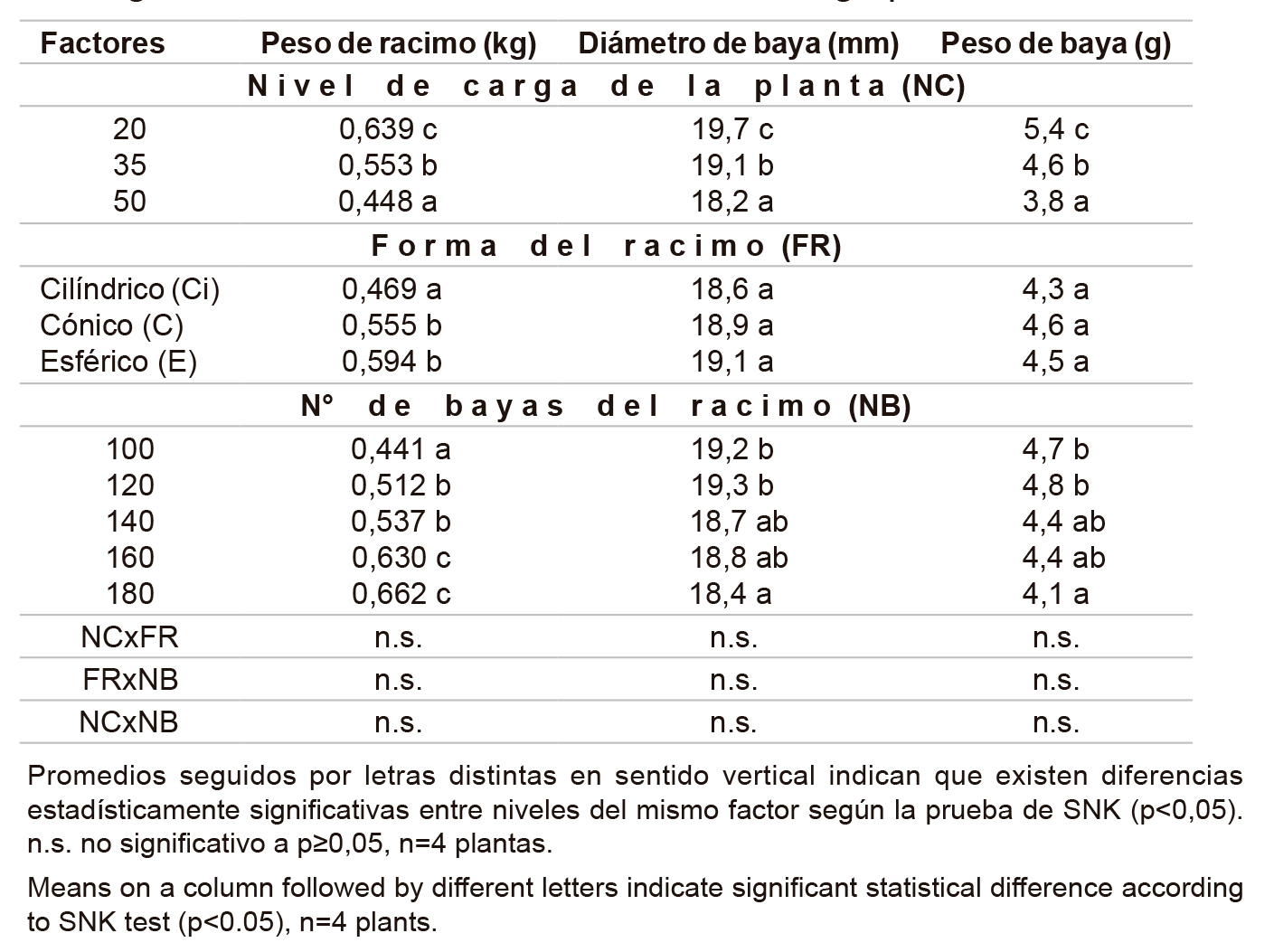Pruning and crop load adjustment tuning of table grapes to maximize yields
Keywords:
cluster shape, potential production, berry size, revenueAbstract
Pruning and crop load adjustment were evaluated in order to improve fruit quality and/ or yield. Cluster information was collected under different conditions, and differentiated management was assessed. Clusters and vegetative parameters of table grapes cv. Thompson Seedless, Superior Seedless and Flame Seedless were characterized according to cane bud position. Yield and berry size of cvs. Flame Seedless and Redglobe were evaluated on different crop loads and berry number per cluster according to cluster shape. Clusters from distal buds show better quality than cluster from basal positions. Clusters can be classified early on the season, before crop load adjustment, on conical, spherical or cylindrical; with the two former being the best on yield and quality. In general, up to certain level, increasing crop load and berry number per cluster increase yield with no effect on berry size. Results suggest that best revenue is obtained with pruning and crop load adjustment that take into account cluster shape.

Downloads
Published
Issue
Section
License

This work is licensed under a Creative Commons Attribution-NonCommercial-ShareAlike 3.0 Unported License.
Aquellos autores/as que tengan publicaciones con esta revista, aceptan las Políticas Editoriales.


